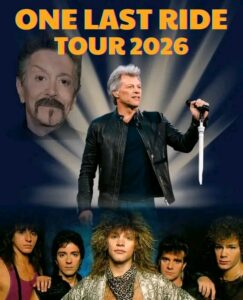
The Rocky Horror Picture Show: A Shocking Cult Classic That Still Divides Generations 50 Years On.
September 30, 2025
Few films in cinematic history have generated as much controversy, adoration, and cultural shockwaves as The Rocky Horror Picture Show. Nearly half a century since its release in 1975, the movie still stands as one of the most polarizing and electrifying phenomena ever created in the entertainment world. What was once dismissed as a bizarre, vulgar flop has transformed into a global midnight-movie sensation — yet its shocking content, provocative themes, and audience-participation culture continue to divide families, religious groups, politicians, and even film critics.
As the world celebrates its 50th anniversary this year, Rocky Horror is once again making headlines for both its enduring popularity and the social storms it continues to stir. But why does a campy musical comedy filled with glam-rock tunes, fishnet stockings, and a “sweet transvestite” from outer space still shock audiences today?
The Birth of a Cult Oddity
When The Rocky Horror Picture Show debuted in 1975, it was a commercial disaster. Produced for just $1.4 million, it initially bombed at the box office. Yet, its unapologetically raunchy and flamboyant style struck a nerve with a select audience of misfits, outcasts, and countercultural rebels.
Directed by Jim Sharman and adapted from Richard O’Brien’s stage musical The Rocky Horror Show, the film told the outrageous story of Brad Majors and Janet Weiss — a conservative, newly-engaged couple who stumble into the castle of Dr. Frank-N-Furter, a cross-dressing alien scientist. Within minutes, their buttoned-up world is ripped apart by a parade of sexual innuendo, gender-bending performances, and shocking musical numbers that openly mocked 1950s sexual morality.
For 1970s audiences, this was dynamite. Frank-N-Furter’s character, played with flamboyant brilliance by Tim Curry, directly confronted taboos around sexuality, gender identity, and desire. While critics sneered and mainstream viewers were scandalized, young people — especially those identifying with the LGBTQ+ community — found in Rocky Horror a liberating anthem.
Why Audiences Were Shocked
To modern audiences raised on streaming platforms, drag culture, and inclusive media, the premise of Rocky Horror might not feel revolutionary. But in the mid-1970s, Western culture was still dominated by conservative attitudes toward gender and sexuality. The sight of a bisexual alien singing about seduction while dressed in lingerie was not just controversial — it was scandalous.
The film mocked traditional masculinity, lampooned heteronormativity, and gleefully blurred the lines between male and female. Songs like Sweet Transvestite, Touch-a, Touch-a, Touch Me, and Don’t Dream It, Be It shocked audiences by celebrating sexual exploration in ways mainstream cinema had never dared.
Religious groups denounced the film as sinful. Parents forbade their children from seeing it. Some theaters even refused to screen it, calling it “immoral” and “degenerate.”
Yet, these very reactions only fueled the film’s cult appeal. As midnight screenings spread, rebellious youth flocked to theaters not just to watch the movie, but to participate in it.
The Audience Participation Revolution
By the late 1970s, Rocky Horror screenings became infamous for audience involvement. Fans shouted back at the screen with sarcastic commentary, threw rice at the wedding scene, squirted water guns during rainstorms, and danced in unison to The Time Warp.
What shocked critics and sociologists alike was the communal chaos that unfolded in theaters. Unlike traditional cinema, where audiences sat quietly in reverence, Rocky Horror flipped the script. Viewers became part of the performance, blurring the line between spectator and participant.
“Rocky Horror was never just a movie — it was a rebellion,” says Dr. Elaine Matthews, a cultural historian at UCLA. “It invited people to break rules, laugh at authority, and express desires society told them to repress. That was shocking then, and to some communities, it still is today.”
The participatory culture also became a safe haven for the LGBTQ+ community at a time when acceptance was scarce. For many, midnight showings were their first chance to openly embrace self-expression.
The Shocking Legacy: Embraced and Condemned
Despite its loyal cult following, The Rocky Horror Picture Show has remained a lightning rod of controversy. While celebrated in cities like New York, San Francisco, and London, conservative towns often treated the film as a dangerous influence.
In the 1980s, during the height of the AIDS crisis, some religious groups accused Rocky Horror of “promoting immorality” and “corrupting youth.” In the 1990s, debates over its explicit sexual themes resurfaced in American politics, with some school boards attempting to ban Rocky Horror screenings.
Even today, some groups argue the film’s humor trivializes sexual assault and objectification. Critics note that Frank-N-Furter’s seduction of Brad and Janet — disguised as their partners — raises troubling questions about consent. While fans defend the film as camp satire, detractors argue its messages are outdated and offensive.
2025: The 50th Anniversary Shockwaves
This year’s 50th anniversary revival has once again pushed Rocky Horror into the spotlight. A massive international tour, remastered theatrical releases, and live performances are reigniting old debates.
Conservative groups in the U.S. Midwest have protested anniversary screenings, calling them “dangerous propaganda” for promoting “gender confusion.” In contrast, LGBTQ+ activists defend the film as a cultural landmark that gave marginalized people visibility long before mainstream media did.
Streaming platforms airing the film have also faced backlash. Some parents’ organizations demand Rocky Horror be restricted to adult-only ratings, citing its sexual content. Meanwhile, young fans on TikTok have embraced it, sparking a viral trend of Time Warp dance challenges — proving the cult energy is alive and well.
“Rocky Horror is shocking because it refuses to die,” says journalist Peter Langford. “It’s a movie that’s half-century old, but it still provokes the same mix of outrage, joy, and confusion. Very few works of art can claim that.”
Why It Still Matters
The enduring shock of The Rocky Horror Picture Show lies in its fearless embrace of difference. In an age when identity politics, gender debates, and freedom of expression remain hot-button issues, Rocky Horror feels more relevant than ever.
It continues to shock conservatives who see it as an attack on tradition, while inspiring new generations to explore individuality and acceptance. Its messy, outrageous nature prevents it from being comfortably categorized, which is exactly why it continues to thrive.
“Don’t dream it, be it” — the film’s most famous line — remains a rallying cry for those fighting to be seen and heard.
Conclusion: The Movie That Refuses to Behave
Fifty years on, The Rocky Horror Picture Show remains cinema’s most shocking contradiction: a box-office failure that became a cultural revolution, a comedy that sparked outrage, and a camp musical that inspired millions to embrace their true selves.
What began as a niche oddity has transformed into a global ritual — one that still unsettles, still provokes, and still celebrates freedom in ways few films ever dared.
As the curtain rises on its 50th anniversary tour, one thing is certain: Rocky Horror isn’t just a movie — it’s a mirror reflecting our deepest anxieties, desires, and debates about who we are. And that, perhaps, is the most shocking truth of all.





